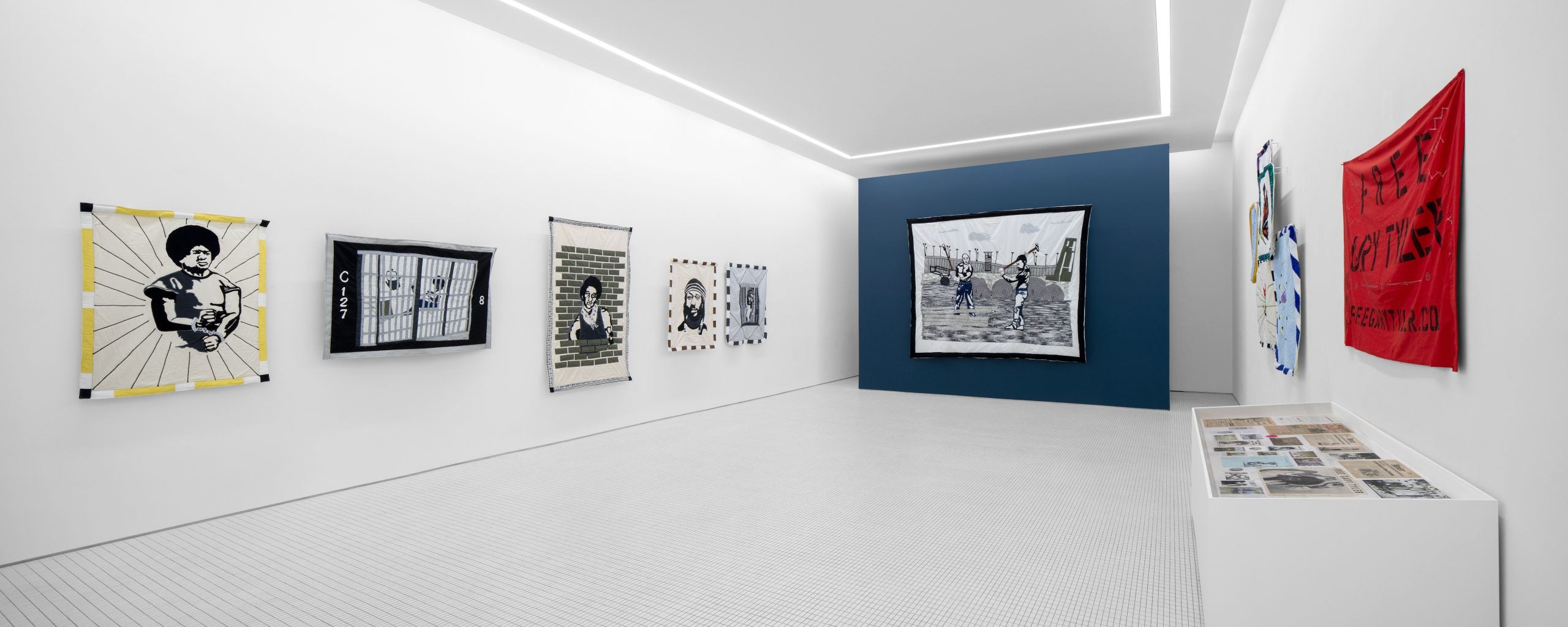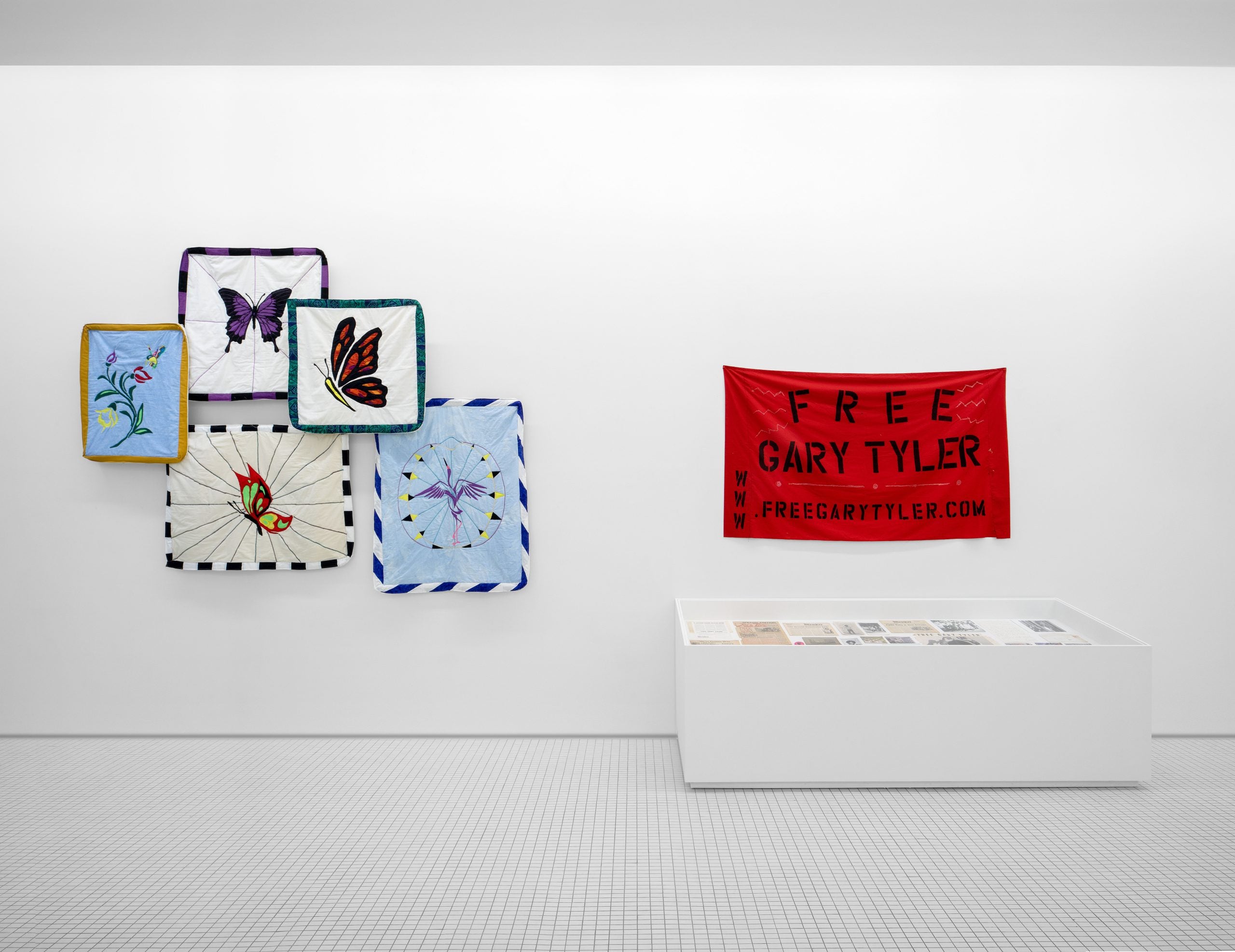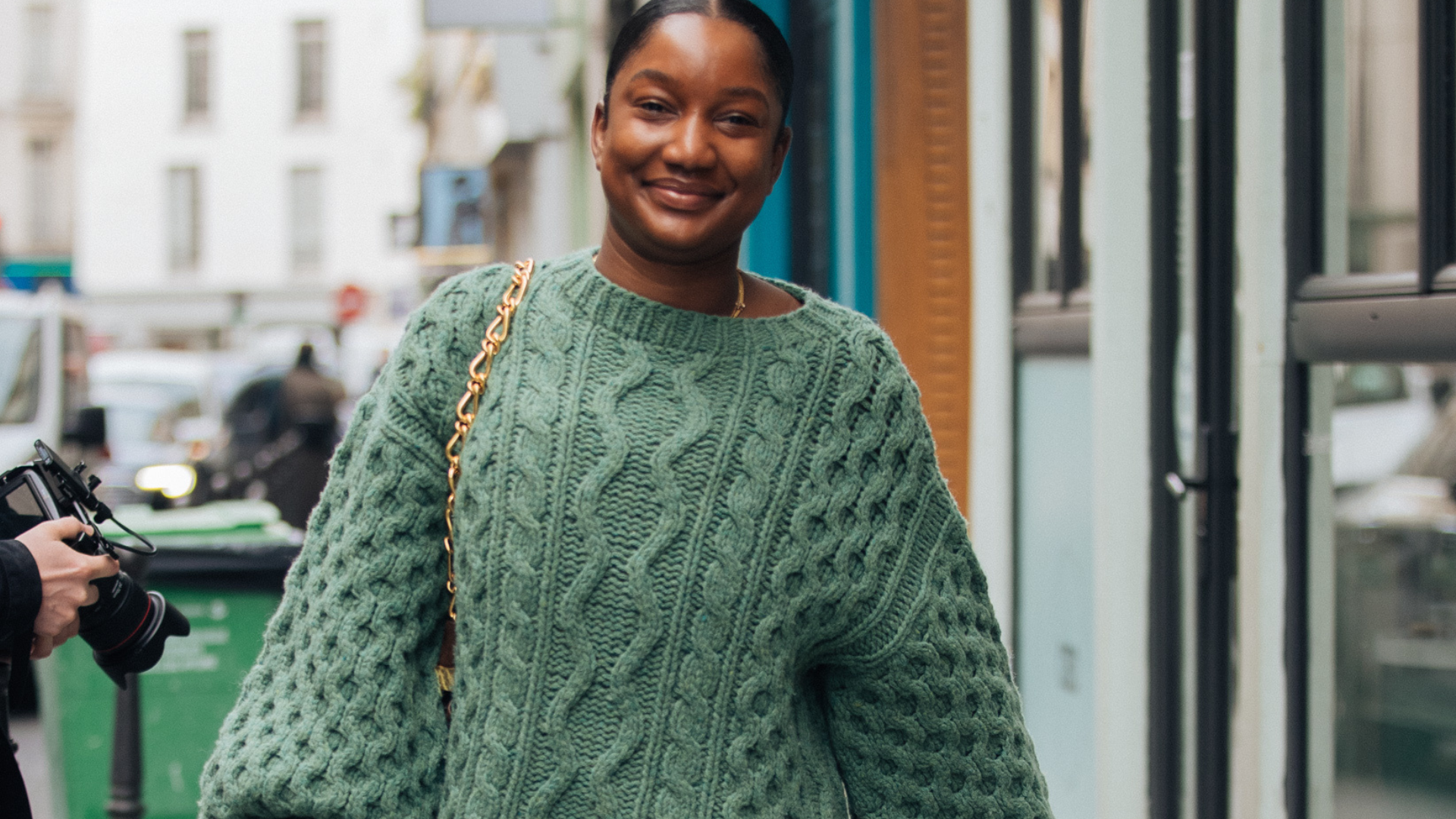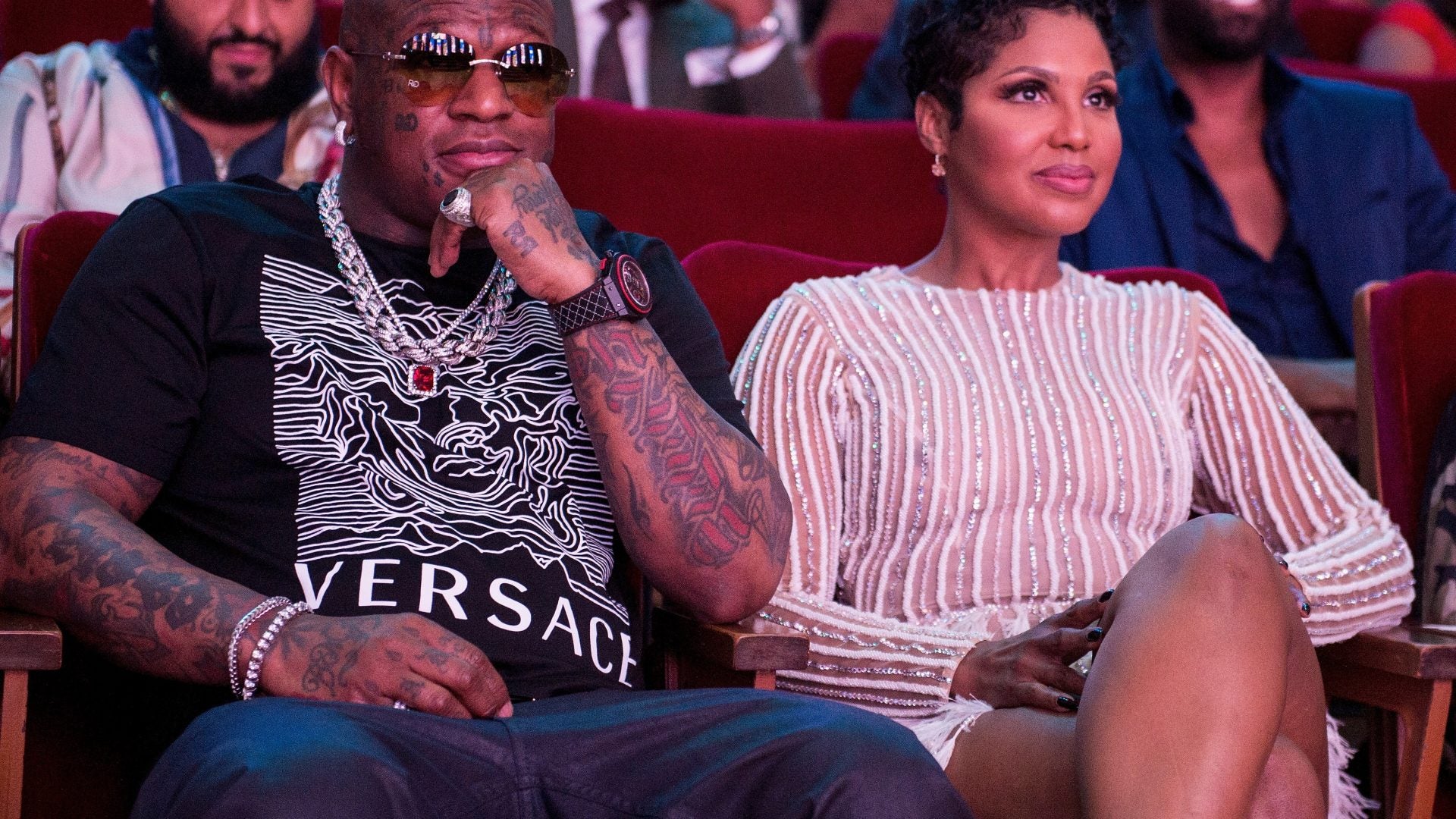
In 1974, when he was only 16 years of age, Gary Tyler was falsely charged with the murder of a white youth in Destrehan, Louisiana, during a racially tense era in the deep South. These events resulted in a 41 ½ year stint in the state’s penitentiary, and the dreams of yet another young man of color, deferred.
While serving his unwarranted sentence at Angola, Tyler learned how to sew in the prison’s Hospice Program, where he would use it to support the program financially and to comfort dying patients, along with their families. Ironically, he grew up in a household where this craft was prevalent, but at the time it wasn’t at the forefront of his interests. “My grandmother – she sewed as well as made quilts,” he says. “When you’re young, you don’t pay too much attention, but you do notice things that people you’re around are doing. Later on in life, everything tends to come full circle.”

The full circle moment would manifest itself after his release in 2016. Quilting – something was present throughout Tyler’s entire life – served as cathartic for the now 64-year-old, specifically in his work homeless youth, and as an artist.
On July 8, Detroit’s Library Street Collective would present We are the Willing, Tyler’s first solo gallery show. Curated by Allison Glenn, the title was taken from the first lines of the motto for the Angola Prison drama club, which Tyler was president of for almost 30 years. “We started working on this project in February and then I visited his studio in April,” Glenn tells ESSENCE. “Actually, unbeknownst to me until I arrived – and Gary actually didn’t tell me this – it’s something that I found in my research. I visited him on the anniversary of his release.”
“To me, that was really profound, because the exhibition is of him looking back at images that are documenting his time incarcerated,” she adds. “This exhibition is about this turning point in his career as a professional artist. It was profound because the moment marked a pivot to the future. It marked this future looking or future thinking project we were doing that was looking at the past. It was quite symbolic.”

For Gary Tyler, the word freedom means more to him than most. This new series of self-portraits, all created within the past year, contains brightly-colored abstractions, flowers, and butterflies. The butterfly is a representation of new life, and also signifies the transformation Tyler has experienced in recent years. Through incarceration, his future was somewhat uncertain, but now, Tyler has the freedom to create, and the freedom to live his truth, unhindered.
ESSENCE: How does it feel to have your first solo exhibition finally unveiled to the public?
Gary: It’s a good feeling, knowing that you are being recognized for the work that you put in. Unlike being in prison, when we did work, we were doing it for a formal organization. Even though it had meaning in it; because it was a way of raising funds for the guys that were in hospice that were dying. That’s the gratification that we got out of it. I don’t want to take and negate the hard work that we put in there. Yes, it was gratifying doing that as well. Having to do this, of course, it’s a thing where it shows a reflection of my past, and what I did, and about being a hospital volunteer. This is where I learned the craft of quilting.
Your mother and grandmother, they were the people who first introduced you to the craft of sewing, correct?
Yes. My grandmother sewed as well as made quilts, and I distinctly remember my mother, who was a seamstress, would get these catalogs from Sears and Roebuck, and JC Penney, which would have patterns for dresses and stuff like that. She made things not only for herself, but also my sisters as well.
Why do you think you gravitated towards sewing later in life as opposed to when you were a child?
Well, because the way I saw it, it wasn’t a masculine thing to do. Even when it was brought to me later on, I still had my reservations. In prison, if there’s a weak, soft side of you – especially in a hard prison like this, that’s one thing you have to shake. As you grow and realize, people here know you, and they know that you’re not soft. They know that you’re not weak. If anything, they’re going to say, “That is a good thing,” especially when they know what you’re doing it for. That’s how, eventually, I went into sewing and quilting fully.
With this new exhibition We Are The Willing, how did the connection with Library Street Collective come about?
Well, that’s definitely a long story, but it can be expressed that I came in contact with them through Robert Moreland. I showed him some of my past work that I did when I was in prison, and he was impressed with the work that I did, and he asked me if he could take pictures. From there, that’s when he connected me with JJ and Anthony. We had a Zoom call, and it went well, so Anthony invited me that, if I would ever come to Detroit, give him a call. A few months later, I was invited to speak at an event in Detroit. While here, I decided to give Anthony that call.
He asked me about my aspirations, of what it is that I wanted to do, what I expect out of my work. I told him that I wanted to do me, from a unique point of view, I just didn’t want to be a typical artist. At the time, I considered myself a hobby crafter, not an artist. That’s a term that they use in prison when you do artwork. Nonetheless, I shared with him that I wanted to do something that was provocative, eye-opening, where the audience, when they leave, they’ll leave with an impression that this individual, you would say he didn’t allow the conditions of prison to dehumanize him. He didn’t allow the prison to destroy his character.
That’s what I wanted to relay, because people feel that individuals who serve an extended amount of time in prison, that they leave prison bitter, and angry with the world. I didn’t want people to feel that way, even amidst the injustice that I had to go through. I just wanted people to know that I survived my ordeal, and that it brought the best out of me.
For this exhibition, I noticed you’ve incorporated butterflies in some of the work. When did that practice come about?
Anthony said something that I’ve been hearing other people say for a while, that “my greatest asset was myself.” It took me some time to ponder, “what could I really do or say to exemplify who I am as an individual?” I started doing butterflies, because I felt butterflies; it exemplifies a change, an evolutionary change in nature itself. How butterflies start off as a caterpillar, and knowing the arduous journey that it takes in order to become a butterfly. I wanted to show my journey, but there was something missing; what was missing was that I wanted people to know that I was this individual who was able to, you could say, struggle, and at the same time, through his struggle, be able to develop unique skills, and also, a unique vision about life itself.
One thing in particular, through that vision, I learned how to forgive. I learned compassion. I didn’t allow my condition to dehumanize me to where I can’t forgive other people, thinking that the world is against me. In order for me to do that, I had to release a lot of stuff that I’ve been through. I didn’t want it to control me. I wanted to control it. I feel that people have read a lot about me, and some knew about my story. I feel grateful that people who have supported me in the past, that they lived to tell about it. I’m grateful for that, because I want them to know that their mere support was one of the driving forces that kept me alive, that kept me focused. Doing this, they’ll be able to see my works, and how I was able to make that transformation.
When people experience We are the Willing, what do you want them to take from it?
That no matter what journey you take in life, whatever you encounter in life, and no matter how adverse that you would say the challenges are, if you maintain your focus, and stand on principles, you have a better chance of surviving whatever hardship, or whatever disappointment, whatever let down in your life. You always have to reflect on what other people have done, how other people have survived their ordeal. If they can do it, you can do it. It may appear to be a monumental task, but it’s important to have confidence in yourself, belief in yourself, and in the people that support you and love you.







